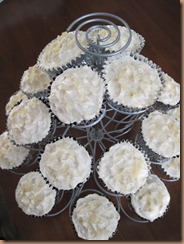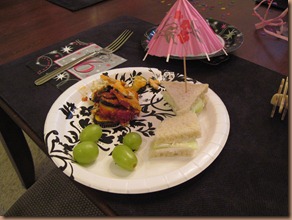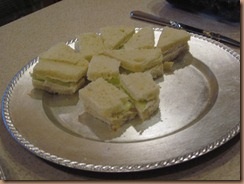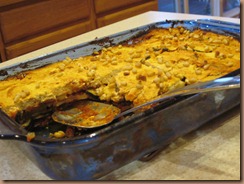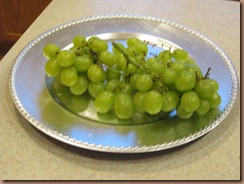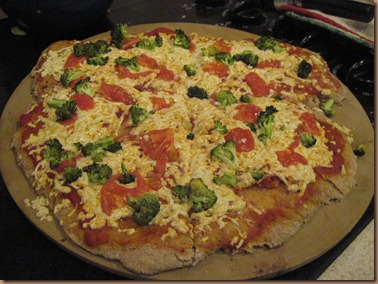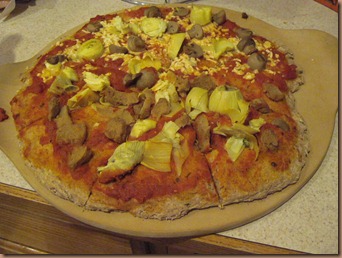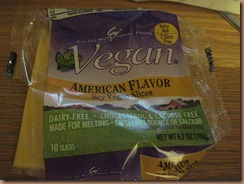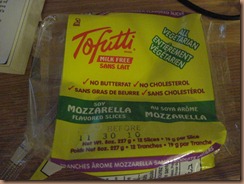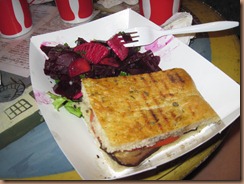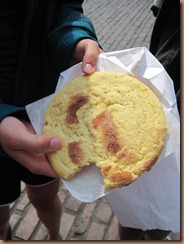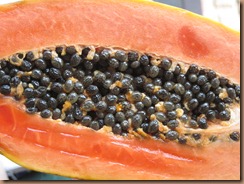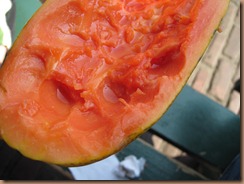Dehydrating is tricky. A dehydrator makes it easy, but its easy to burn your carrots in a oven. For small things likes peas or corn, spread it out on a baking sheet so that you only have one layer of food. If they are overlapping or touching to much they will dry unevenly. For most foods the range in which you dry it in is between 125 F and 145 F. Thankfully, meats, eggs, and dairy products are the hardest to dry, so if your new to drying, that's a plus.
After you pack it, make sure it is sealed very tightly so that moisture does not cause it to rehydrate and spoil.
Avoid mixing foods with non-complementing flavors, like peaches and garlic together, because they might aquire the others flavor during the drying.
To save fuel at camp, cook things at home and then dry them so all you have to do is rehydrate.
If you have fresh vegetables, blanch them before hand. (To blanch, steam the vegetables by putting in a basket above a pot of boiling water and cook until just tender, or you can also add the vegetables to boiling water very quickly and then remove, and plunge in ice water. Both work) You do this because otherwise the enzymes in the veggies will cause them to spoil. Dry at 130 F.
fresh, canned, and frozen vegetables and fruits are all good for canning
Dry fruits at 135 F. To slow the browning of fruits soak for 5 minutes in a mixture of 1/4c. lemon juice and 1 quart water.
Also, we made granola bars to eat at breakfast.
Anderson Lake Granola Bars
2 c. of you favorite granola
2 c. quick oats
1/3 c. brown sugar
1/4 cup flour
1/2 cup soy butter (these things are not low calorie)
1/2 c maple syrup
1/2 c chunky peanut butter
1/4 c. ground flax seeds
1/2 cup milk free chocolate chips
At Home:
Heat Oven to 350 F
Mix dry ingredients in large bowl, breaking up any clumps. In saucepan, melt soy butter, then stir in peanut butter and maple syrup and heat until melted, stirring often. Stir wet into dry and mix well. Oil a 9x13in baking pan and spread the mix evenly in the pan. Bake for 20 minutes. Right after you remove from the oven, sprinkle the chocolate chips over the top and then spread evenly over the bars as they melt. After you let the chocolate cool for about 10 minutes cut the bars but don’t remove from the pan. This will help keep the bars together later. After the bars are cooled, then remove from pan and store.
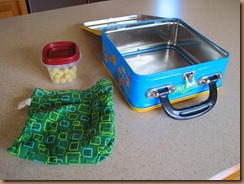 A lunchbox, no brown bags.
A lunchbox, no brown bags.